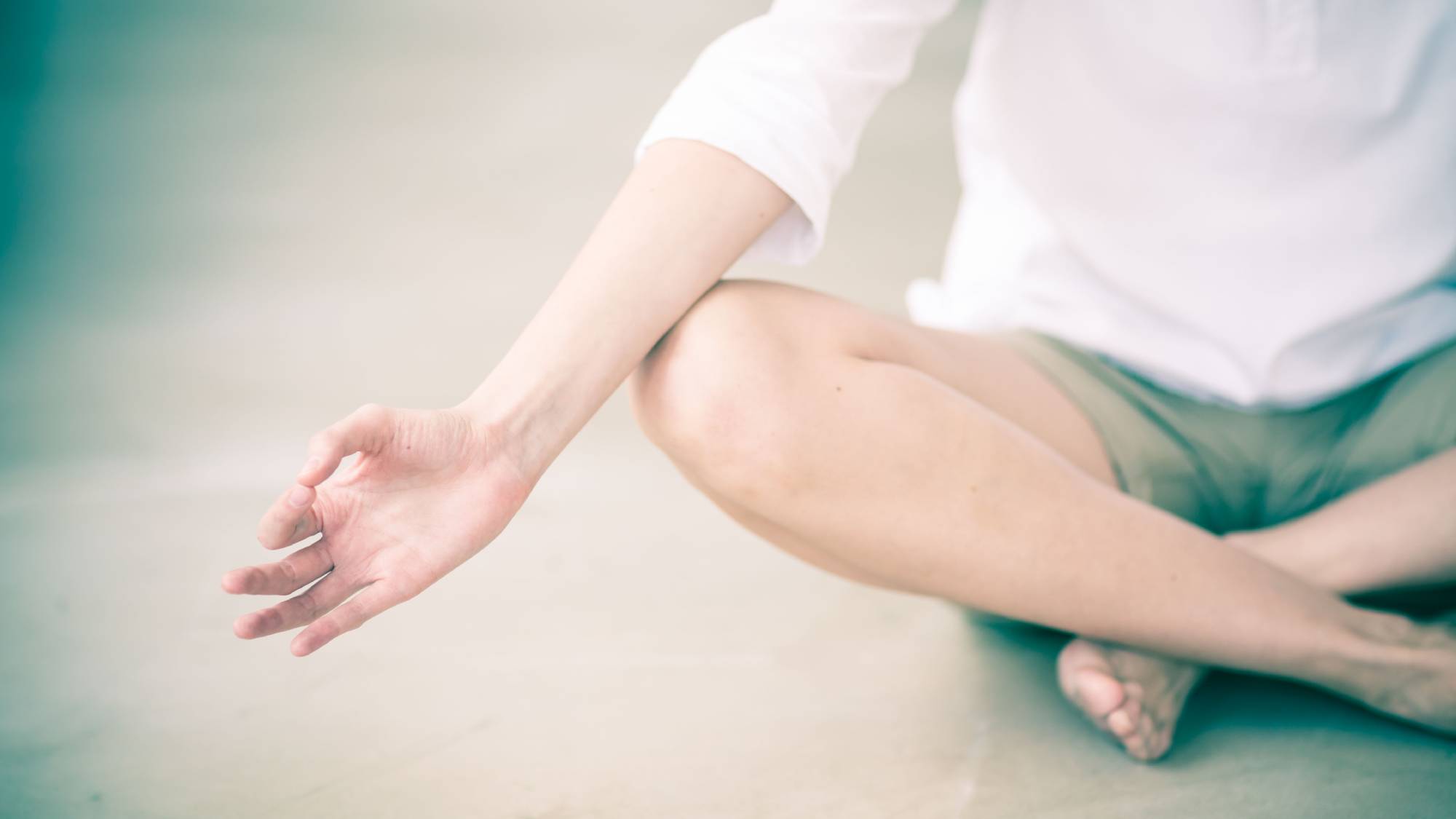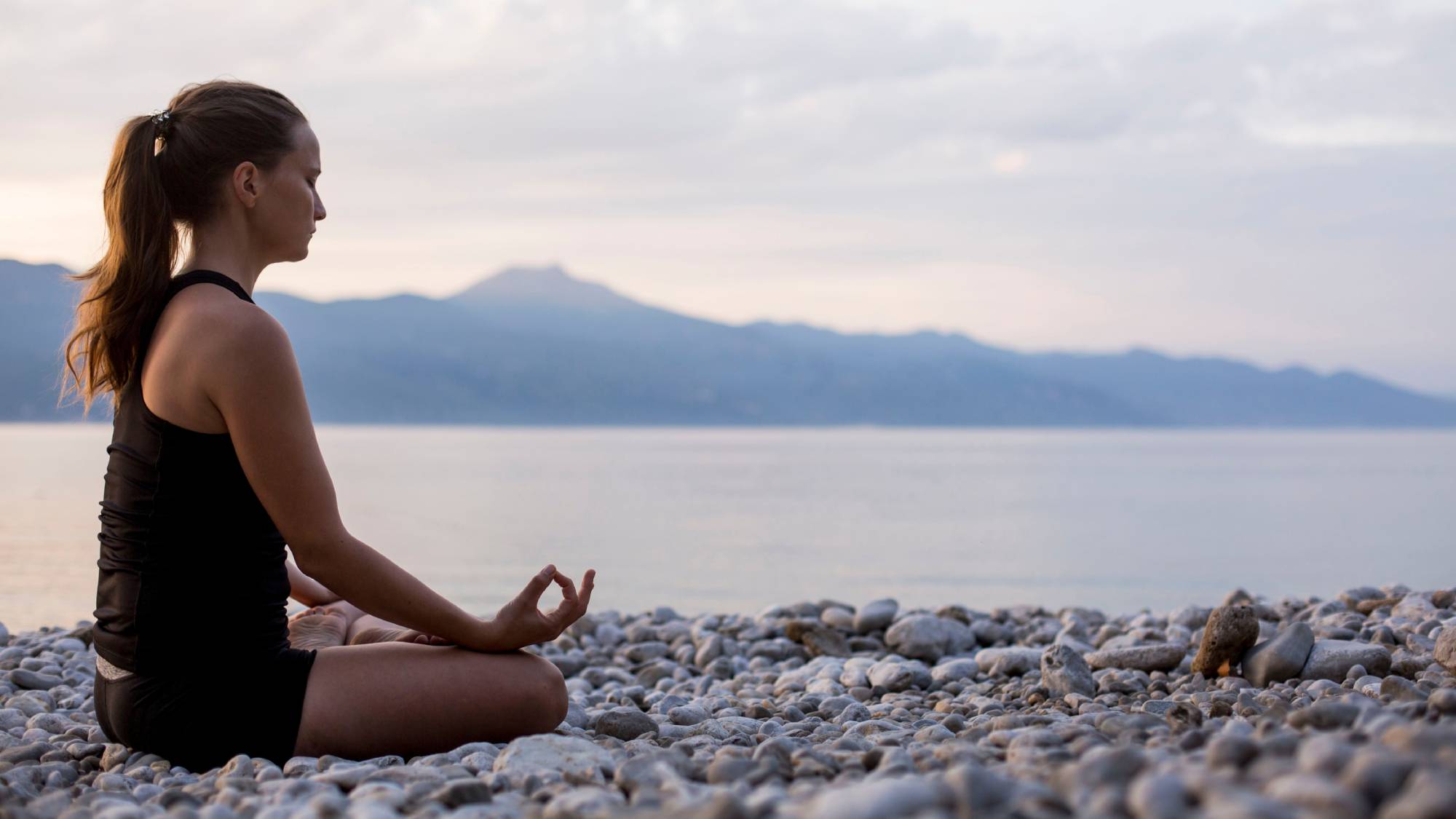Forget mindfulness - is sophrology the key to a calm mind?
It's popular in continental Europe, but what is it - and how does it work?


It's popular in continental Europe, but what is it - and how does it work?
Sophrology isn't exactly a word that rolls of the tongue, but it's a term that's growing in popularity. Why? Because we live in an age where 'wellness' reigns supreme - on Instagram with the yoga pros and their impossible back bends; in cafes and juice bars where spirulina smoothies are a staple; in gyms where it's commonplace to flip tyres and drop fifty burpees.
But the buzzword also encompasses mental health and the idea that we should be looking after our minds. Last year, a study published on MentalHealth.org revealed that 74% of UK adults admit they've felt so stressed at some point over the last year they felt overwhelmed or unable to cope. Anxiety UK reports that more than one in ten people are likely to have a 'disabling anxiety disorder' at some stage in their life. The 2017 Great British Bedtime Report by Sleep Council showed that only 26% of Brits get the recommended seven hours kip a night.
While there are various treatments and medications available to those who suffer from stress, anxiety and sleepless nights, more and more people are taking a holistic approach to their health - whether it's using an app like Headspace, reading the best self-help books or taking up yoga.
And sophrology falls into that category.
The sister to mindfulness and meditation, this practice promises to clear and de-stress the mind using a combination of powerful relaxation techniques. A bold claim, indeed.
As someone who practices yoga and meditation regularly, I was intrigued when I heard about sophrology. What is this practice that is being touted as 'the new mindfulness'? Does it really work? And what exactly does a sophrology session feel like?
Celebrity news, beauty, fashion advice, and fascinating features, delivered straight to your inbox!
To find out more, I spoke to Sophrologist, Wellness Expert and author, Dominique Antiglio.
What is sophrology?
'It’s a practice for self-development and stress management,' she tells me.
'It’s a guided practice, so it makes it much easier for people who have difficulty meditating or staying in silence and focusing the mind. You’re guided through a state of relaxation through breathing exercises, visualisation, body awareness exercises and a type of meditation - so it’s a unique combination of those practices and everything has been designed so that you can tap into your inner resources and bring more awareness to who you are.'
Essentially, the practice is a combination of body, mind and breath awareness which also incorporates physical movement. It's designed to clear the mind, relax the body, calm your breathing, and focus on connecting all three.
But that sounds rather similar to mindfulness and meditation, I hear you saying. So - what's the difference?
Difference between mindfulness and sophrology
Mindfulness, meditation, sophrology - isn't it all just the same thing with three different names?
'The first difference between mindfulness and sophrology is the aspect of performance. The other one is about positivity,' Dominique explains.
'Sophrology is not only learning to be non-judgemental and to look for positive resources - like being more confident, for example. People who practice a lot of sophrology become more positive. They learn to listen to more positive sensations within themselves.
'We do visualisation to go in the past and look for positive experiences. We don't often do that; the past is often about the things that have gone wrong and not the things that have gone well, so that aspect of positivity and the fact we work with the future and the past and the present is also a specificity to sophrology.'

Mindfulness encourages you to be more present, to really be aware of everything you can see, touch, hear, smell and taste. If sophrology also involves bringing awareness to the body, why isn't it the same thing?
'One aspect is body awareness. We talk a lot about body sensation in sophrology - movement, breath - so all the practices from level 1 to 12 are informed by how you feel in the body, and you learn to dive more and more into the most subtle awareness of the different systems in your body. That’s how you increase your awareness - because you get to know your body in much more depth.
'The body has got everything, all our good and bad experiences – it’s all stored. So if you know how to access that then you can also release old emotions that you don’t need anymore and program yourself differently for certain situations.'
Instead of being a mindfulness practice, it is actually more meditative and focuses on slowing down the mind. However, where meditation is about silence stillness, sophrology incorporates physical movements, visualisation and is guided.
'That can be much more relaxing because you know you’re going to be taken through certain steps in a session so a lot of my clients find it much easier than mindfulness,' she continues.
'When we meditate it’s extremely difficult sometimes to focus the mind and to let go to be that neutral observer. So we have a step by step practice where we do meditation sitting before being guided into different visualisations, coupled with the awareness of the body and simple moves.
'The way you’re guided makes you aware of the energy of the mind rather than the sensation in the body.'
Who is sophrology for?
'People who suffer with anxiety, sleeplessness and stress are the three main types of clients I see. That’s where people start,' Dominique informs me.
'Perhaps they have analysed why and how they get stressed, but maybe they haven’t found a tool to actually deal with it.
'It's also great for people who are working on self development and lack a real tool to move forward. It's good for people who are preparing for big events - a competition, speech, interview, giving birth - and I often have people preparing their wedding speech, they are so nervous! It doesn’t have to be used for something catastrophic. It can also be used for a positive day so you can enjoy it and let go of the fear.
'Sports people on the continent have used sophrology a lot - golfer Seve Ballesteros studied with Alfonso Caycedo (the founder of sophrology), tennis player Yannick Noah, the Swiss ski team prepare with sophrology - it has been really endorsed since the 70s.'
How does a sophrology session work?
'Usually the client explains the situation and then I tailor a practice to them that’s really connected to what they’re looking for.
'What is the resource that they’re trying to increase within themselves? Maybe it’s calm, maybe it’s recuperation, maybe it’s confidence, may it's to have better sleep. Then I tailor a practice and record it as I guide them and send the recording to them so they can practice between sessions. Then next time we add more tools.
'The method has been created to unveil and to show the resource needed, so it’s a very clever way of working and if people practice they get results. It’s quite mathematic. If you do just one session it’s nice it’s relaxing, teaching a few simple techniques with the breath, but the more you practice it’s like anything - the deeper you go, the more in flow you become in your life.'

So what happens during a sophrology session?
I headed to 58 South Molton Street Wellbeing Centre, London, for an appointment with Dominique. I wasn't sure what to expect, or if it would detangle the many things going on in my head. I had work deadlines coming out of my ears, I was organising a trip to Australia for my best friend's wedding and to top it all off I had just been ghosted. My mind was a chaotic jumble.
But before we get started, Dominique explains what will happen.
'Everything you do is practical and the practice usually starts with relaxation through a body scan. You can practice it standing or sitting, and then we have a set of three exercises that we start with. There is the body scan, the clearing breath and the activation of your tuning into your vital power - which is what I call it in my book.
'After a body scan you change your position and use the tips of your fingers and connect with different parts of the body, which we call systems. We have five, and once we have located tension or blockages in our bodies we use the breath to clear it through each system.
'Then we will sit back again, relax and welcome the positive intention. Perhaps it’s calm we need, perhaps it’s joy, perhaps it’s feeling more grounded, or confidence, or energy, and as we learn to couple that positive intention with the breath, we also connect the breath with the body.'
Once I know what's about to happen, I get comfy and Dominique instructs me to move my thumb to the middle of my eyes before closing them. What follows is a guided scan of the body to become aware of where the tension lies, and a combination of guided movements - placing my fingers on my forehead, neck, chest, stomach and belly button; standing up; flapping my shoulders and co-ordinating my breath. Finally, she instructs me to sit back down and the visualisation comes into play as I imagine my favourite comfort place (Cottesloe beach, Perth - FYI).
Does sophrology work?
After twenty minutes, I open my eyes and am instantly aware of how light I feel. Dominique even comments that I slipped into the relaxation really easily (which I feel pretty smug about, not going to lie).
So did it work?
For me, yes, it did. My mind felt clearer, my body felt softer. Leaving the clinic, I felt a renewed sense of calm which I managed to maintain - even while trekking home on the overcrowded Central Line.
However, I can also see how it might not be for everyone. Guided practice can feel either comforting or uncomfortable, depending on how easy you find it to relax and let go with someone else present. The physical nature of the session may also feel a little embarrassing for some (wiggling your shoulders with your eyes closed in front of a stranger isn't something you do every day), and trying to halt niggling thoughts can feel impossible if it's the first time you've tried it.
But overall I would definitely recommend a session to anyone who is interested in using an alternative method of relaxation. Just try it once, see if it's for you - and if you'd prefer to go it alone, then you can always teach yourself at home.

How to learn sophrology
There are twelve levels of practice, Dominique tells me.
'You start with this foundation practice, and then you can dive into level one. That has to do with standing work, so in this state of relaxation we usually stand and we start to activate the different systems with movement - for example a head rotation while we hold the breath, a shoulder pump or arm rotation, or some walking movements. We tune into each system of the body and we activate them so it brings more awareness. People who are stressed aren't connected to their body, they are all in the mind, all in the future, all in the past, and they’re not able to feel and connect perhaps through that state of stress they feel.
'It’s very quick, it’s very efficient, it’s all about being aware of these movements and noticing sensations as they arise.
'Then level two is all about the mind, so once you’re grounded in your body and you know your body better you’ve created some positive sensations through the practice and you’re ready to discover the mind.
'And then level three we bring the two together. We have more practices with different postures, it comes from the zen Buddhist practice, and we do other exercises that bring the two components together. It's about learning to understand through experience what the mind body connection is, and how you can use it in your daily life.'
But if you're someone who doesn't have time to get to a clinic and practice sophrology with a guide, there's good news - you can also practice it at home. In The Life-Changing Power of Sophrology, Dominique shares her wisdom so that anyone can become familiar with the practice, and once you have the correct tools it's easy to implement them in your daily life.
'I show all the five core principles of sophrology and readers will be taken through a simple step-by-step journey of ten minute practices,' she says.
'By the end of the book they’ve already practiced the foundation and level 1, and some 'super tools' I call them, which are practices I tailored for the most common issues I see in my practice. They focus on sleep, confidence and success, and you’ll see every time it’s only 10 to 12 minutes. I think in these days of stress your practice shouldn’t have to be too long, and you can extend – but as a starting point ten minutes is enough.'
To book an appointment, or for more information about Dominique's online sophrology course, visit www.be-sophro.com.

Jadie Troy-Pryde is News Editor, covering celebrity and entertainment, royal, lifestyle and viral news. Before joining the team in 2018 as the Lifestyle and Social Media Editor, she worked at a number of women’s fashion and lifestyle titles including Grazia, Women’s Health and Stylist, and now heads the Marie Claire UK news desk.